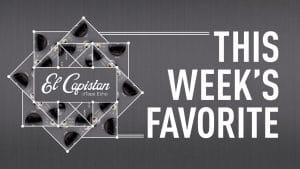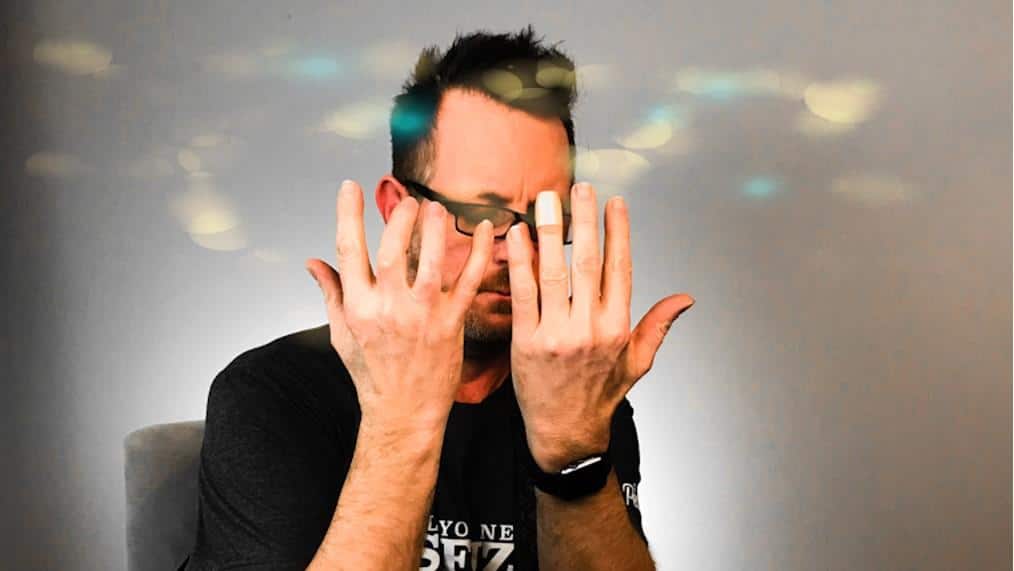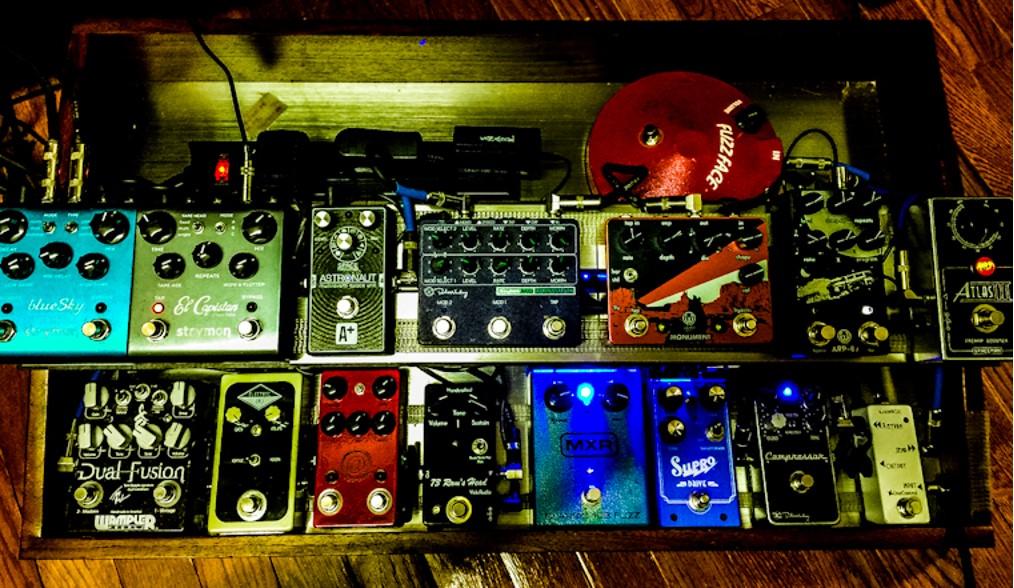
This Week’s Favorite: Donivan Berube
This Week’s Favorite is “So Much No Mountain” by Arizona singer-songwriter Donivan Berube. Berube’s deft use of El Capistan’s delay and tape saturation effects combined
Free US Shipping On Orders Over $49
Easy 30-Day Returns
Financing Available Through ![]()

We are always excited to discover musicians using Strymon pedals in inspiring and creative ways. Today’s Artist Feature is no exception. Guitarist Tim Williams reached out to us a few months back to share with us how his discovery of blueSky and El Capistan provided the creative spark needed for what would eventually become his 2019 release, Sorry. The record is a special collection of songs that mark not only his first full-length solo songwriting effort but also his triumphant return to the guitar after a prolonged reprieve due to an unexpected injury to his hand.
Sorry and the two EP releases that followed are filled with beautiful and layered compositions that speak to Williams creativity and talent. We hope his story will inspire you to create something beautiful and unique to you in this new year.
Tell us a little bit about your musical background.
I started very young, playing the drums at around the age of 6 up until about 21 when I started to become fascinated with guitars and the sounds and tones of guys like Eric Johnson, Ty Tabor, Tom Morello. I traded all of my drum gear for a guitar rig, which led me to my first real electric guitar, an EMG-loaded Lotus Les Paul copy with a Wonderbar tremolo. Thus began two years of woodshedding. I would literally go for days without sleeping. It would be day job for 9 hours and 14 hours of guitar!
You were a part of the Louisville music scene in the 90s. What was it like?
I was a part of the Louisville scene during the lean years to where all eyes were on what was going on there. It was a post-Seattle rush to find the next hot spot, and with the likes of Days of the New, My Morning Jacket kind of bucking the typical “grunge” sound, Louisville was the place.
It was a difficult scene to break into, quite a lot of clique factions as it were. I believe had I not been working in music stores at the time I would not have had access to be in the bands I was involved with. I loved the musicians there and have cultivated long musical and personal friendships with several. I just got disillusioned with the music business and its politics and bad managers killing it, so in 2003 a few months after my second child was born, we put it all on a truck and moved to Asheville, along with my wife’s family. It seemed perfect, smaller town charm with a big city feel, and [had] very bohemian aspect about it.

What led to your return to music after ten years?
After settling into my woodworking career [in Asheville], I spent years diligently trying to hone my skills, and eventually became a woodworking instructor at a local woodworking school. Around early 2012, the very acoustic and very Appalachian/Bluegrass scene started shifting to a more Indie-driven and Americana sound. Neither were my thing really, but electric guitars were making a comeback and [I] got wrapped up in stuff like The National, Arcade Fire, alt-J — I could list bands for hours — and that textural style of guitar playing just grabbed me. Suddenly, I had a whole new respect for Radiohead, who are the masters of textural, well, everything really, and that sealed it for me!
You’ve experienced and overcome something that many players fear happening to them – an injury to your hand. Can you share with us what went into your rehabilitation? What kept you motivated to keep on course and continue to make music?
October 17, 2012, which is referred to at my house as “that which shall not be spoken,” I got my right hand in a wood joiner, which proceeded to remove the knuckles and 3/4” of length from my middle and ring finger on my right hand. I am right-handed which means my fretting hand was fine. I call that lucky, most would disagree. Honestly, I thought I was done playing, I had come to rely on hybrid picking with all of my right hand to the extent that I was convinced I could not play any other way. So, during an extensive time in bed between four surgeries, I discovered YouTube just as it was starting to get traction online and, in this order my outlook changed: firstly, I saw Andy Timmons on a “Rig Rundown” getting sounds I loved out of almost exclusively just regular picking; then I discovered Rob Chapman; and finally, I found That Pedal Show. With the content those guys were putting up I started to believe I may have a chance.

What prompted you to start writing songs?
After a year and a half of intensive physical therapy, and nearly two years of struggling with straight picking and realizing I would never be the guitarist I once was or thought I was, I decided to try songwriting as a last resort.
I actually started with writing instrumentals, but that became frustrating without the proper chops. I used to sing when I was younger and my buddies Mike Crooke and Brian Schaffner finally convinced me that my singing voice was more than adequate, so I started fleshing out my first vocal songs ever and at age 49 to boot.
What led you to blueSky? And El Cap?
As I was starting to put my rig together it became clear that pedals were definitely the way to go, the circuits and designs had come so far by 2018 that for a fraction of the investment of multiple amps, and without the hassle of multi-effect units, I could switch out dedicated sounds quickly. I had what I thought was a workable board by the time I started really writing in the spring of 2018 and wrote a few things that were just OK but not passable in my book. I had seen for some time that Mick and Dan from That Pedal Show, the Andertons crew, and Andy Timmons were all big Strymon disciples, and never thought there would be that big of a difference in what I had and what those could do until I found that HeyDay Music here in town had Strymon pedals. So when I decided to switch up my reverb pedal [I thought] that I would give the BigSky a try, out of stock that day but that’s when I discovered the blueSky, at the time I was only using a couple of reverb sounds, so I gave it a go and was staggered at the sound, which is where the seed was planted. I put it in the board and within an hour or so it became the driving sound(s) of “Blindsided,” a song that I had written but was just bland to me. Shortly after That Pedal Show did a tape delay segment with the El Capistan as one of the delay choices, I acquired it as well.

Tell us more about the song “Savior.” You’ve said blueSky and El Cap were the main creative drivers of the song. Was there a particular setting or setting combination that sparked its creation?
After about 30 minutes of getting acclimated with the El Cap and how it was working with the blueSky, I literally had all of the controls on both units set at 2 o’clock except for the pre-delay on the blueSky which was at 9 o’clock with all of the switches in the middle positions.
I played the first four notes of the aptly named song “Saviour,” then the next four, and playing off of the delay and leaving space just to hear those gorgeous repeats into that lush reverb, then bridge chords just fell into place, and chorus structure, and that’s when I blurted out “I wish I could just fly right now.” And all because of the sounds I was able to achieve, I quickly wrote that down and at the top of the sheet I wrote “Savior,” which began a barrage of songwriting that I never thought would end and still hasn’t. Over a year period, I wrote parts of roughly 50 songs and refined those down to about 14 that I actually went back and added the Strymon pedals to everything that did not have them on it, and all 14 songs were done on one guitar, my Ibanez semi-hollow body. Those songs became Sorry my first solo outing.
Tim William’s “Savior”
Are there more songs on the horizon?
Besides Sorry, I released Decoys which is a 6-song EP with some newly written material and a couple of songs that were not quite ready enough for the full Length album. I also just released a sort of Lo-Fi instrumental EP of song ideas that don’t seem destined to have vocals in them called Overblown.
“Isolation” from Overblown
To hear more of Tim’s music, you can find him on Spotify, iTunes or his YouTube channel.
Subscribe to our newsletter to be the first to hear about new Strymon products, artist features, and behind the scenes content!

This Week’s Favorite is “So Much No Mountain” by Arizona singer-songwriter Donivan Berube. Berube’s deft use of El Capistan’s delay and tape saturation effects combined

The Sub-Gents may currently hail from Scarborough, North Yorkshire, but the band’s founder and frontman, Fletcher Stewart is a Tennessee native at heart. Spending

The funky and sweet sound of the band Brothers Gow has garnered quite the large and loyal following since their early days of playing
One Response
OMG this interview was so amazing. Congrats to Tim Williams!